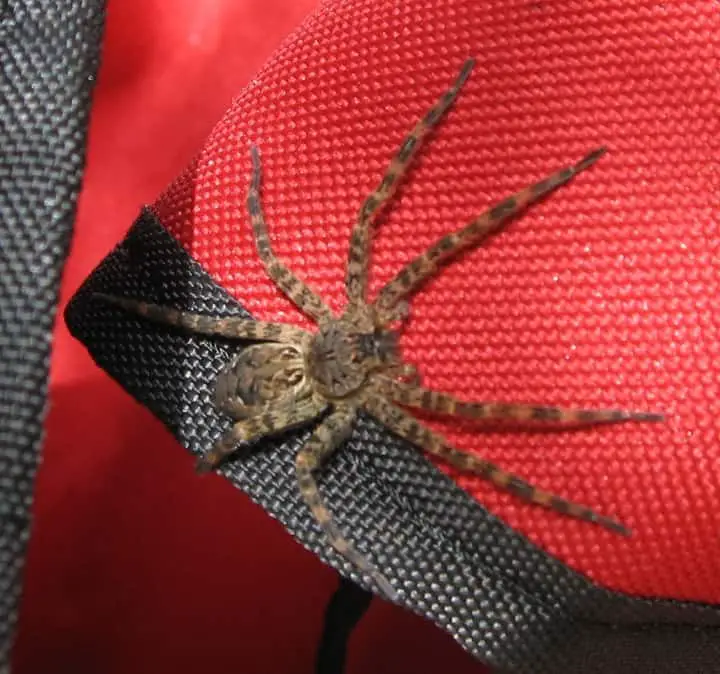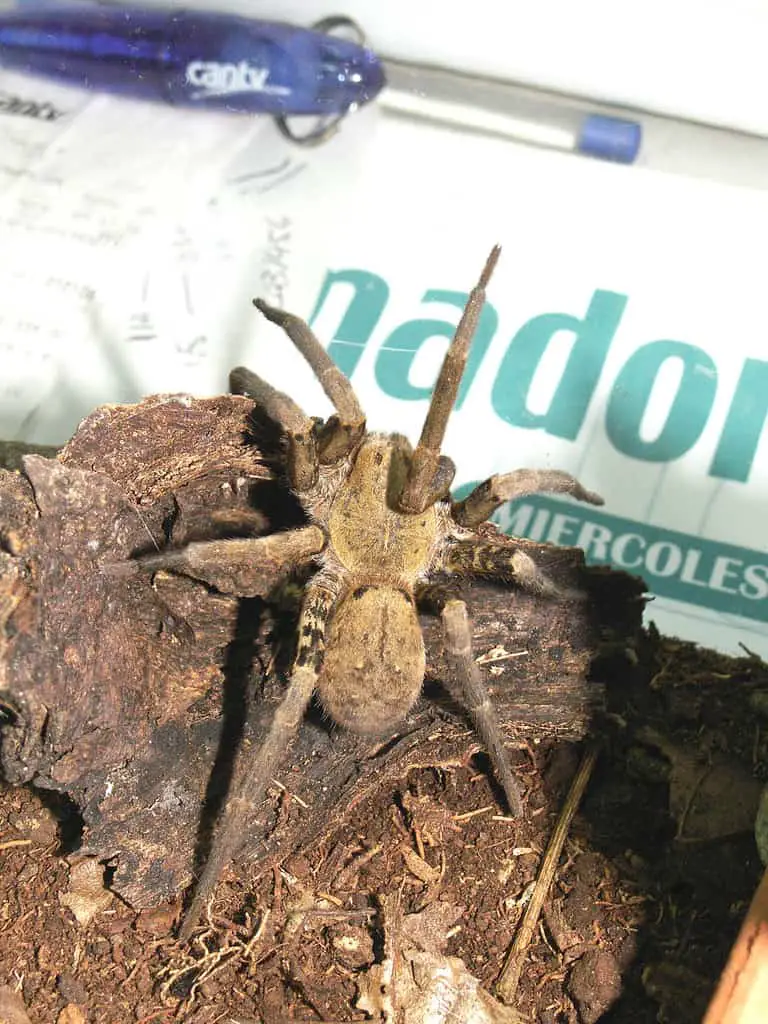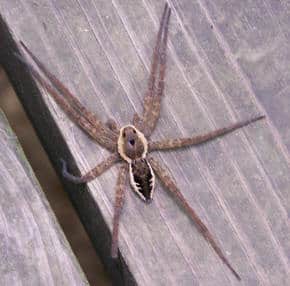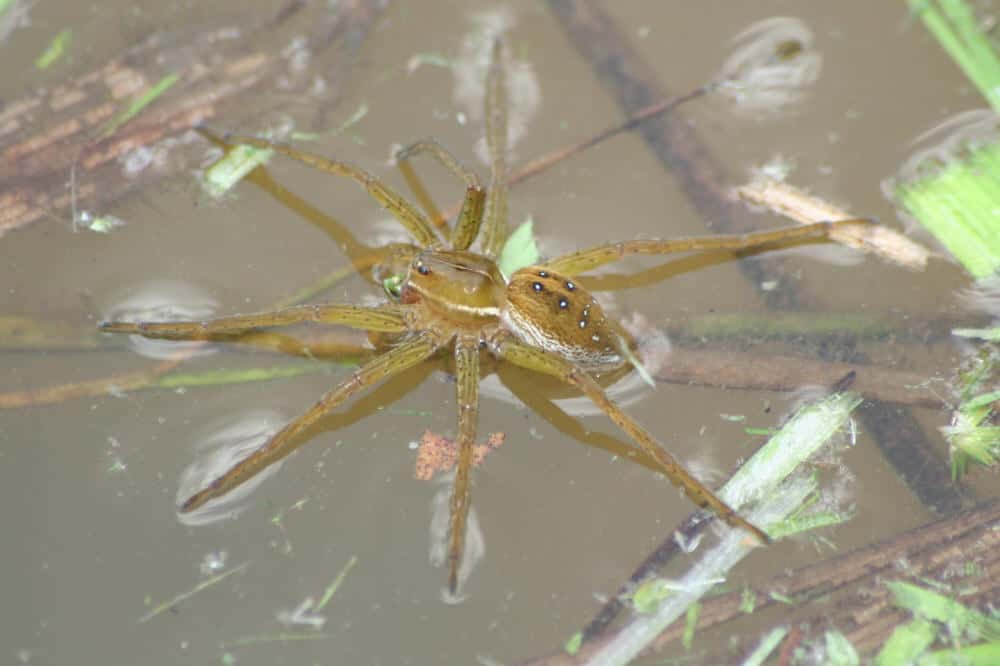Fishing Spiders belong to the Pisauridae family which includes the Nursery Web spiders. They are often mistaken for Wolf Spiders but can be distinguished by their colouring and number of eyes. Pisaurids have their eyes arranged in 2 rows, the posterior row slightly recurved, the median eyes in the second row slightly (if any) larger than the others. (Wolf spiders have eyes arranged in 3 rows).
There are several types of Fishing Spiders – Dolomedes tenebrosus, Dolomedes Triton, Dolomedes albineus, Dolomedes striatus, Dolomedes vittatus and the Giant Fishing Spider.
Table of Contents
Dolomedes tenebrosus
The large female Dolomedes tenebrosus has a body (cephalothorax and abdomen) that reaches about 1” long. When outstretched legs are included in the measurements, it can measure over 3” long. Males are about half this size. The body is a mixture of light brown and light and dark gray. The legs have dark rings and long spines. The abdomen has 3 conspicuous black W-shaped marks, each of which ends in a light brown mark. This species occurs from southern Canada south to Florida and west to Texas and the Dakotas. Adults can be found throughout late spring and summer. The spiders tend to lurk in corners and crevices during the day, and they hunt actively after dark.

North American pisaurids are all wandering spiders, stalking their prey rather than snaring it in webs. The members of the genus Dolomedes are the “fishing spiders.” Unlike wolf spiders, which they resemble in their giant size, they typically live near water. They run freely over water in pursuit of prey, including small fish and aquatic insects. When frightened, they may dive beneath the surface. Dolomedes tenebrosus are, however, opportunistic, generalist feeders, and they have even been known to consume slugs despite their sticky mucous.
Usual habitats for D. tenebrosus are swamp, pond, and lake margins, where it may be found on tree trunks, rocks, logs, and similar situations. Individuals are also found in dark and damp situations beneath bridges or culverts, or in rock piles. Although the Dolomedes tenebrosus is often found near water, this species is not as well adapted to an aquatic environment as some other Dolomedes species. Individuals sometimes stray quite far from water and may even be found in dry wooded areas. Some individuals enter houses, where they may be found in basements, kitchens, and even bedrooms. Although fishing spiders are big enough to give a painful bite, they are not considered dangerous.
Giant Fishing Spider
The genus Ancylometes contains 15 species at the moment counting some of the largest araneomorph spiders, like the A. rufus: adult females which measure 4 – 5 cm in body and more than 10 – 12 cm as legspan; the males are smaller, with about 2.5 – 3 cm body but with longer legs.
Both are brown with dark spots on the abdomen. Males have two thin clear lines all along the carapace, very evident pedipalps and longer legs. Juveniles are pretty similar to adults but external sex determination is sure only in the last moults when patterns on carapace, abdomen and pedipalps shape become visible.

Dolomedes vittatus
The Dolomedes vittatus Fishing Spider has triangular dark spots in front of the thoracic groove.


Dolomedes triton
The Six-Spotted Fishing Spider (Dolomedes triton), is slightly smaller than D. tenebrosus, but it is nevertheless a very large spider. It is often seen hunting on the water’s surface in ponds and slow-moving streams.
Click here for more photos of Fishing Spiders.
Information and pictures were taken from children’s projects and where credited to that child does not claim to be original information. Where possible, permission to reproduce has been sought. Any infringement of copyright is purely unintentional.
